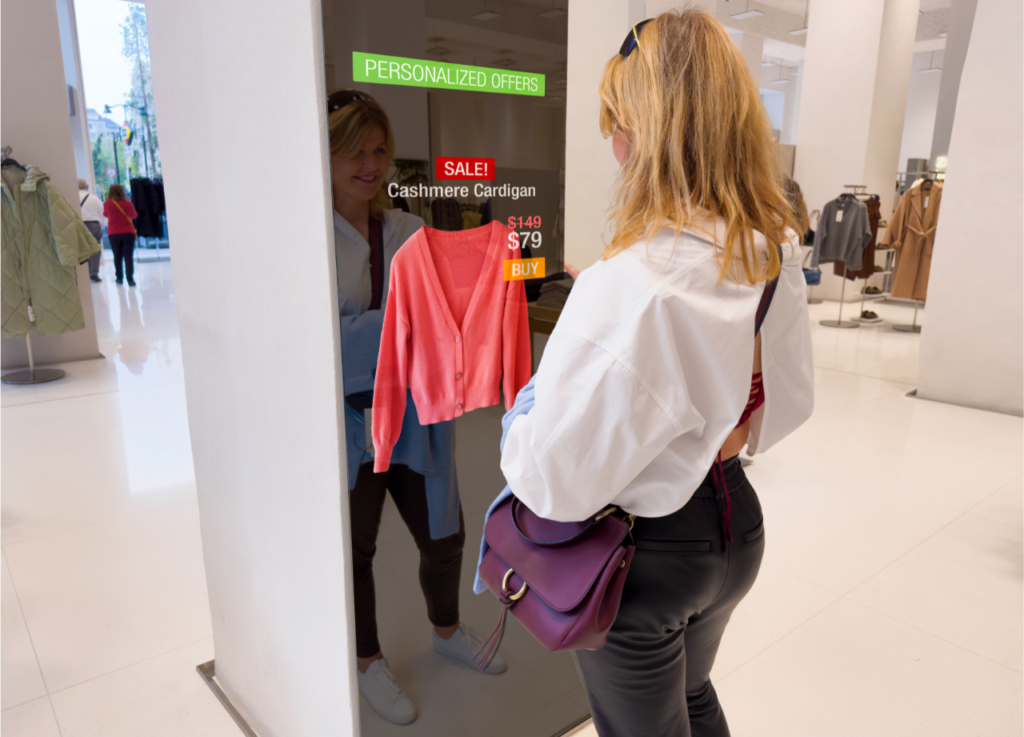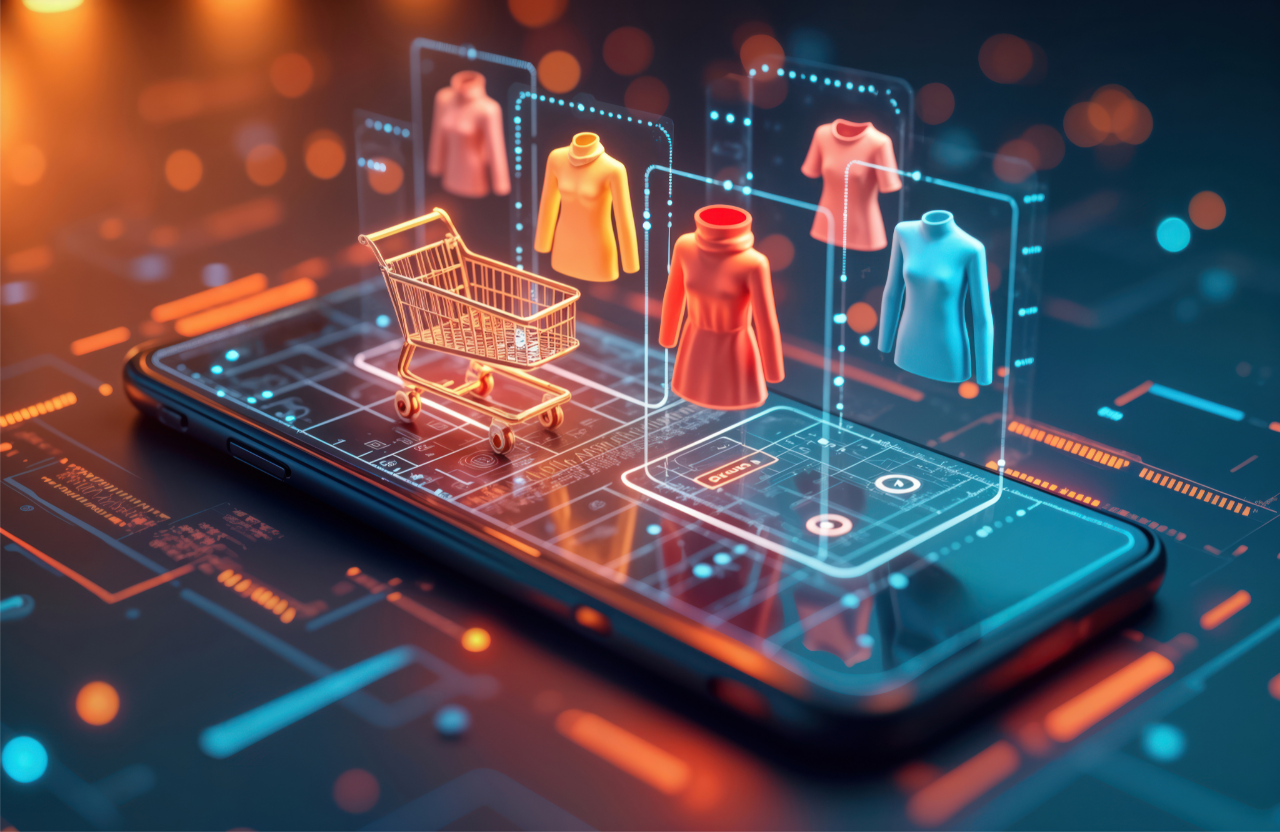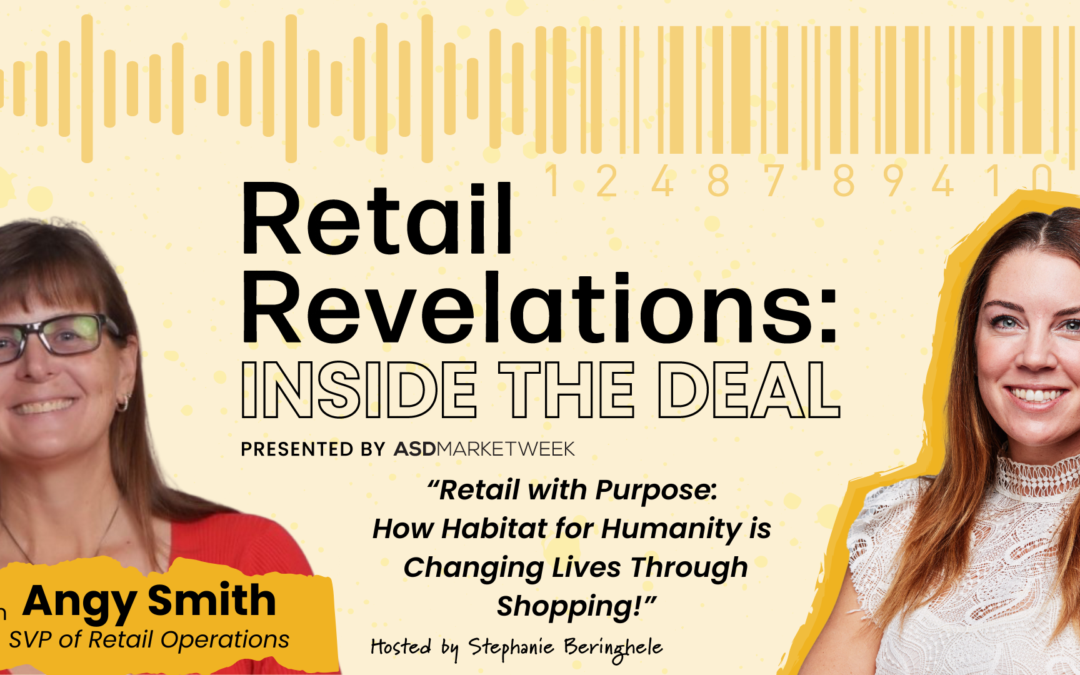The retail world isn’t just evolving — it’s accelerating. For savvy buyers at mid-sized chains, the 2025-2026 retail tech landscape offers something critical: tools to work smarter, not harder. From artificial intelligence to augmented reality, emerging technologies are reshaping how you source products, engage customers, and optimize every square foot. With ASD Market Week returning this August, it’s the ultimate opportunity to connect the dots between strategy and solution — and see the future of retail in action.
AI Merchandising Moves from Trend to Tactical Advantage
Smarter Assortments. Real-Time Decisions. Higher Margins.
AI-powered merchandising platforms are no longer “nice to have” — they’re essential. These systems now integrate localized data like weather shifts, regional events, and social media trends to dynamically adjust product placements. The result? More relevant assortments and fewer markdowns.
McKinsey research shows that AI-based forecasting can reduce errors by up to 50% and decrease inventory costs by 10% overall for retail buyers, this means improved turn rates and maximized sell-through without overcommitting capital. And yes — your customer notices. Today’s shopper expects that both in-store and online assortments reflect their preferences. Meet those expectations, and you’re not just preventing lost sales — you’re driving loyalty.
CDPs + Generative AI = Personalized Engagement at Scale
Marketing That Converts. Inventory That Moves
Retailers are combining Customer Data Platforms (CDPs) with generative AI to deliver hyper-targeted messages, automated retargeting, and even custom product descriptions. According to Salesforce’s 2024 State of Marketing report, 73% of high-performing marketers say AI helps them better understand customer needs.
A great example of this in action is Sephora. Its recommendation engine blends purchase history, loyalty data, and personal quizzes to generate tailored offers — and customers respond. The model has helped reduce cart abandonment and increase return purchase rates..
For mid-sized chains, the takeaway is clear: AI-enhanced CDPs don’t just improve marketing, they fine-tune buying decisions. Promotions can be localized. Inventory levels can be aligned to high-converting segments. And bestsellers? They become easier to predict — and stock.
 Frictionless Checkout & Unified Commerce: The New Norm
Frictionless Checkout & Unified Commerce: The New Norm
Meet Customers Where They Are — and Where They’re Headed
Fast, seamless, and secure checkout is now a baseline expectation. In 2025, biometric scans, mobile payments, and AI-powered fraud detection are streamlining transactions while reducing loss prevention concerns.
Starbucks is a great example of a retailer implementing unified commerce platforms. It links app, in-store, and online sales — give retailers one clear view of buying behaviors across all channels. For buyers, this insight is gold. You can spot trends sooner, adjust planograms on the fly, and identify new adjacencies that grow basket size. Think of it as checkout data meets merchandising strategy. The faster and more cohesive the transaction, the more informed your next product decision becomes.
AR + Virtual Try-On = Higher Conversions, Lower Returns
Help Customers See It, Try It — and Buy It
Augmented reality (AR) has crossed the threshold from novelty to necessity. Whether it’s virtual try-on for accessories or web-based AR product demos, the goal is clear: give customers more confidence, faster.
In fact, a recent study by Deloitte found that AR can increase conversion rates by up to 94%, and reduce returns by as much as 40% for size-sensitive items like apparel. Retailers using tools like virtual signage and AI styling advice are seeing measurable lift in sales, especially for high-margin and impulse-driven SKUs.
Even better? Today’s solutions require no app downloads — they’re mobile browser-ready, meaning instant adoption at the point of discovery. For buyers, it’s an opportunity to embrace experience-first assortments. If your product can be visualized in context — on a customer, in their space, or as part of a lifestyle — it’s more likely to move.
AI Forecasting + Real-Time Supply Visibility = Operational Power
Buy Smarter. Stock Faster. Waste Less.
Supply chain disruptions aren’t going away — but today’s tools make them easier to navigate. Real-time visibility platforms now pull in global data signals, vendor updates, and demand forecasts powered by machine learning.
According to IBM, retailers using AI forecasting are improving sell-through by up to 20% while lowering inventory holding costs by as much as 30%. That’s huge for buyers trying to balance selection with seasonality and price pressures.
Dynamic pricing also plays a growing role. Simulations at the POS can determine the best price to move inventory without eroding margin. For example, flash discounting on aging SKUs, based on foot traffic or cart abandonment signals, helps minimize losses — and preserve profitability.
Where Innovation Meets Action: ASD Market Week
The future of retail technology isn’t just on the horizon — it’s on the floor at ASD Market Week. From personalized promotions to predictive planning, this is where buyers can:
- Demo new tech platforms hands-on
- Compare AI, AR, and ecommerce tools side-by-side
- Connect with service providers ready to scale with your business
- Discover exclusive deals and high-margin products to fuel your assortment
Big Ideas. Real Results. All in One Place.
Whether you’re looking to future-proof your tech stack or find high-impact tools that drive immediate results, ASD Market Week is your one-stop shop.
Bag your best buys. Streamline your strategy. Build your edge.
Register now for ASD Market Week and see what’s next.








0 Comments